Every modern man has at least once in his life has encountered the problem of parasites in the body.The amount and variety of parasites, which in the literal sense of the word cannot live without us, are just huge.Parasites in the human body use it as a source of food and habitat until it is completely exhausted, but without giving their presence.
Parasites are microscopic size or can grow up to a few meters in length, but even in this case their vital activity in the body cannot always be felt.As a rule, one does not feel them and does not even know about their presence in themselves.In the meantime, they have been able to live in a human body for years and even decades, causing it irreparable harm.
Parasites in the human body pose a serious danger and pose a major threat to human health, as they disrupt the work of the internal organs and systems, cause failure in the functioning of the immune system and prevent the complete assimilation of useful substances, vitamins and minerals.In some cases, the situation is so serious that it can even lead to death.
Types of links between organisms
In nature, there are several types of links between organisms that have a diverse effect on one another.
The impact of one species on another may have both neutral and negative.
In addition, there are different combinations of such relationships.Distinguish:
- symbiosis;
- neutralism;
- Antibiosis.
Symbiosis is a form of relationships between two bodys, of which they both benefit.
Neutralism is a type of biological connection that consists in the habitation of two bodys in one territory, but at the same time they are not connected and do not directly affect each other.
Antibism is an antagonistic type of biological connection in which one type of population limits the capabilities of another, adversely affecting.One of the most negative types of antibinism is parasitism.
Parasitism and parasites
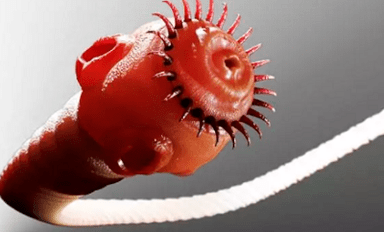
Parasitism is a form of an antibiotic in which representatives of one species use the body of another species as a temporary or permanent environment and a source of nutrients.
Biological organisms that live at the expense of another organism are called parasites.
The parasites do not kill their owner, but for a long time they have been using it as a source of food and habitat.
Parasites include:
- parasitic worms;
- pathogenic bacteria;
- protozoa;
- mushrooms;
- Viruses.
The hosts organisms can be:
- bacteria;
- protozoa;
- plants;
- animals;
- A man.
In the process of development, the parasites undergo several stages of development of eggs and larvae of adults (sexually mature, invasive), which shows their long life and must change 2-3 owners.
Parasite classification
All parasites are divided into connection and optional.
Due the parasites outside the host's body or die or exist in an inactive state.For example: viruses.They lead an extremely parasitic lifestyle, that is, they depend entirely on the owner and activate their activities in it.
Optional parasites lead a parasitic lifestyle, but if necessary, it can exist in an absolutely normal form in the external environment.For example: pathogenic fungi and bacteria.
By the nature of the connection to the home of the hosts, they share:
- true parasites;
- fake parasites;
- Super parasites.
True parasites are the same relationship parasites that a parasitic lifestyle is the only form of survival.However, there are parasites that can be either connecting (permanent) and optional (time).For example: lice, fleas, intestinal helminths.
False parasites - voluntarily living organisms that in the case of accidentally enter the body, are able to live in it for a while and harm it.For example: room larvae fly into a person's gut.
Super parasites are parasites living in other parasites.For example: bacteria and viruses in other parasitic insects that live in other organisms.
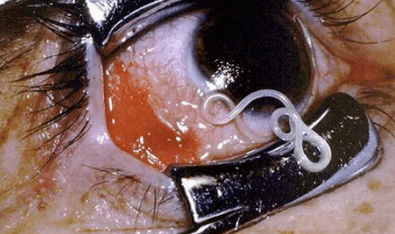
Depending on the duration of interaction with the host's body, they distinguish:
- permanent parasites;
- Temporary parasites.
Permanent parasites are organisms that conduct their entire life cycle in the body - the owner, placing the larvae in it.For example: ascaris, tapeworm, lice.
Temporary parasites;Live and eat at the expense of the owner at a certain stage of development.For example: Laws of a volt fly and imago (adult insects) -in fleas and mosquitoes.
In place of the host body, the parasites are divided into:
- ectoparasites;
- Endoparasites.
Eti -Parasites are organisms that live on the skin of the host's body.For example: lice, fleas, ticks.
Endoparasites are organisms that are located inside the host's body.Endoparasites are divided into:
- internal parasites;
- tissue parasites;
- intracellular.
Internal parasites are organisms that are located in cavities, connecting to the external environment, for example: Ascaris, vlasov -Haded in the human intestine.
Road parasites-type organisms that are located in closed voids and tissues of the host's body, for example: for example, liver, tapeworm cysts.
Intracellular parasites are located in the cells of the body - the owner, for example: malaria plasmodia, toxoplasma.
In terms of environmental distribution, parasites are:
- Curly, found everywhere;
- Tropical, which are common only in hot, tropical climate.
According to biological and epidemiological characteristics, the parasites are divided into:
- Geogelminters- these are parasites that initially undergo a stage of development in the human body and then in the external environment (eg Earth);
- Biogelmints- Parasites in which the cycle of development is carried out not only in the human body but also in the organisms of other beings.As a rule, one is the final owner and sometimes intermediate.
- Contact HelminthsThey are distinguished from the body of the host, and are already mature or half, resulting in a repetition of his infection or infection of another person (autoinasia, re -invasion).
How parasites fall into the human body
There are many favorable factors that contribute to the entry of parasites into the human body:

- dirty hands;
- animal hair;
- poorly prepared products (alimentary factor);
- Contact house factor;
- portable;
- Percutant.
Dirty hands are the main source of parasitosis infection.There are a number of diseases called "Dirty Hands Diseases".Larvae of worms falling first on the skin of the hands and then in the mouth cause characteristic symptoms of the gastrointestinal tract.The path of transmission of these infections is called fecal-oral.Thus, helminths with contact with helminthiasis fall into our body.For example, ascarid eggs enter the human body through dirty hands, poorly washed vegetables, fruits, fruits, greenery and are also common in flies.
Animals and their wave are the source of ascarid and missing worms.For example, for a long time, which has fallen from the wave of the animal, it retains vitality (up to about 6 months) and, falling on carpets, things, linen, toys and hands, penetrate the food tract.
Also, through wet breathing, dogs and cats are able to distract the eggs of parasites at a distance of 3 - 5 meters.In addition, there are fleas on the wave of dogs and cats that also tolerate worm eggs.
The alimentary method of parasite infection is performed:
- through poorly washed vegetables and fruits;
- poorly prepared food (most often meat);
- Contaminated water.
For example, improperly prepared barbecue, sharp or home -made lard can infect a person with trichinosis and echinococcus, and poorly prepared dry fish or caviar can cause infection with opistorchiasis and a wide band.
The transissible method of infection arises with the help of blood insects, for example: ticks, mosquitoes, lice, fleas, bugs.
Contact - the internal pathway of the infection is made through an infected person or animal when connected or uses common household items.
The percutant infection method occurs during bathing in tanks or in contact with infected soil.The larvae penetrate the body through the mucous membranes or human skin during contacts with water or infected soil.
Device characteristics
Almost all parasites are very adaptive to survival.There are a number of factors that contribute to their high vitality:
- Long life expectancy.For example, Helminths have been living in the human body for years, and sometimes just as much as the owner lives.
- The helminth eggs have been able to continue and not collapse in the external environment for decades.
- The stage of development of the parasite also contributes to the life expectancy.It passes all stages of development, starting from the egg, continuing the larva and changing the owner in the event of a lack of nutrients.
- The ability of parasites to cause a state of immunodeficiency of the owner, allowing you to penetrate pathogenic agents from the outside, as well as "encourage" sleeping internal infections.
- Helminths that fall into the gastrointestinal tract of a person produce anti -enzymes, allowing them to pass their own death, but at the same time disrupt the normal process of eating and cause toxic -allergic reactions in their host: asthma, urticaria, dermatitis.
- The unstable parasites are associated with the exchange of genetic information during sexual reproduction, which leads to the stability of their diverse population.
- The wide vitality of helminths in many habitats: soil, water, animals, plants.
- The lack of effective methods of immunoprophylaxis as parasites are able to suppress or change the immune response of the host's body.
How to identify parasites in the body
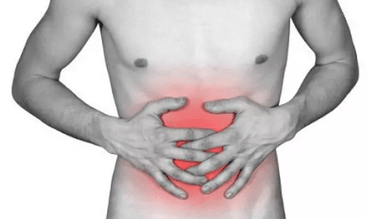
As a rule, one asks such a question when his health is undermined in detail.It is common for a person to reject the problem at his initial stage until he becomes a serious form and will influence his well -being.
Because the parasites are separated by habitat in the body - the owner in endoparasites and ectoparasites, the symptoms are divided into internal and external.
Eti -Parasites are characterized by a certain activity, which is manifested by the following symptoms:
- skin rashes;
- itching;
- burning;
- hyperemia;
- pain (if it was a bite);
- The presence of a wound at the site of the bite.
The detection of endoparasites is much easier.The following actions are performed for this:
- visual identification (if there is penetration from the outside through the skin);
- Microscopic examination.
The discovery of ectoparasites is a difficult task, since in the process of evolution the "dependents" have adapted to survival, while concealing themselves and without surrender, they do destructive work in the host's body.In the end, a person lives, for example, with worms from his or her appearance, and the stages of their development can take several months to a decade.So how do we determine the presence of parasites in the body?
External and internal manifestations
Because parasites differ in the long life expectancy and actively multiply in the human body, they cause symptoms that are long -term recurrent and chronic.
External manifestations of parasite activity include:
- Skin rash;
- itching;
- burning;
- hyperemia;
- feverish condition;
- Quinke swelling.
It is important to know that the degree of development of allergy depends on many factors:
- Location of parasite in the body;
- contact with tissue and vital organs;
- The amount of toxins produced.
The following symptoms include disorders in the body of the internal invasion:
- disorders in the work of the gastrointestinal tract (nausea, diarrhea, landing);
- Weight fluctuations associated with lack of nutrients and decreased appetite;
- longing for sweets due to metabolic disorders and general weakening of the body;
- Chronic fatigue syndrome, which manifests itself through general fatigue, drowsiness, in some cases insomnia, impaired concentration and memory;
- constant headache caused by body weakness and intoxication;
- The grinding of teeth in sleep (bruxism) manifests itself especially in children;
- swelling of the limbs;
- nervous disorders and mental disorders as parasites can cause depression and irritability;
- Paroxysmal cough;
- muscles and joint pain;
- painful pallor of the skin;
- Skin lesions (dermatitis, eczema, acne and acne).
It is especially important to know the common symptoms observed in intestinal parasitic invasion.
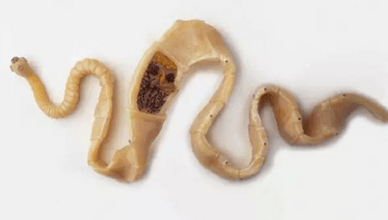
Disorders of the digestive tract that manifest with the following symptoms:
- intestinal cramps;
- Irritable bowel syndrome;
- flatulence;
- constipation or diarrhea;
- Changing the color of the stool;
- itching in the anus;
- Visual detection of helminths;
- The presence of worms in Gamma.
Because worms can reach a considerable size in the body, they are able to physically complicate the progress of the stool and disrupt the work of other organs, such as bile ducts.
Parasites can cause disorders of a particular organ or system.
The most common violations are:
- Anemia.
- Lesions of the central nervous system.
- Abscesses in the liver.
- Purulent inflammation of the gall bladder and pancreas.
- Fruits in the work of immunity to the development of autoimmune reactions.
- Disorders of the respiratory system.
- Joint diseases.
Diagnosis of parasites
All of the above symptoms may not always confirm precisely the presence of parasites in the body, as these symptoms can be observed in many diseases.
You can determine the presence of parasites in the human body when examining the stool.However, this method is unreliable because the larvae of parasites cannot always be seen through a microscope or miss them.In addition, not all parasites lay many eggs.
In order to detect the larvae of parasites in the stool, it is necessary to take up to 8-10 times faecal analysis.But if the analysis shows nothing in this case, but the doctor has doubts, then a number of serological blood tests are prescribed to help detect antibodies of helminths that appear in the blood a few weeks after parasite infection.
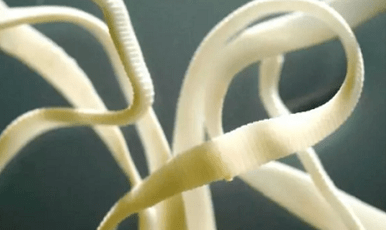
There are other methods to identify the "dependent" SO test called String.A capsule string is inserted into the intestine through the nose and removed it after four hours with the samples obtained.
Another method is colonoscopy, during which the specialist examines the condition of the inner surface of the colon, using a special probe.
Experts have found that the most common parasites are helminths.In addition, they are all very viable and fertile, and their purpose is to destroy their master and to maximize the benefits for themselves.
How to remove parasites from the human body
It is difficult to get rid of parasites, but it is possible.It is important to give priority: it is necessary not only to know how to get rid of parasites, but also to understand what the treatment process itself is.It is performed in three directions:
- The destruction of parasites at all stages of existence.That is, it is necessary to destroy not only adults but also the larvae and their eggs.
- Normalizing the work of all organs and systems of the body.
- Body restoration.
To satisfy all three of the above subjects, you will help modern medicines based on the plants components that the specialist will prescribe.
Such drugs are modern medicines and have a certain therapeutic effect.The use of these medicines in the complex allows you to combine their therapeutic effect and get a wonderful result.
The dosage and combination of medicines are made on the basis of:
- stages of parasitic invasion;
- general condition of the patient;
- the presence of complications from a particular body;
- Severity of the course of the disease.
The priority of anthelmintic drugs is based on:
- efficiency;
- security;
- The ability to combine several medicines for the best therapeutic effect.
Treatment with folk remedies is a very effective way to get rid of parasites.Most often, tea is used to clean the grass, which neutralizes the harmful effect of parasites, cleanses the liver and gall bladder.
They prepare tea as follows: Take one tablespoon of the following plants each: oak bark, hob, wormwood, tancy.Then a tablespoon of plant mixture is poured with 500 ml of boiling water and left in a closed dish overnight.In the morning on an empty stomach, drink 100 grams of the resulting tincture.Treatment lasts two to three weeks.
Pumpkin seeds are also very effective in the fight against parasites.To get rid of parasites, 300 grams of pumpkin seeds are taken, they are cleaned from the bark, but at the same time leave the most transparent film that envelops the seeds.The seeds should be eaten in the morning on an empty stomach.This recipe not only eliminates parasites, but also improves the functioning of the intestines, stomach, liver and gall bladder.





















